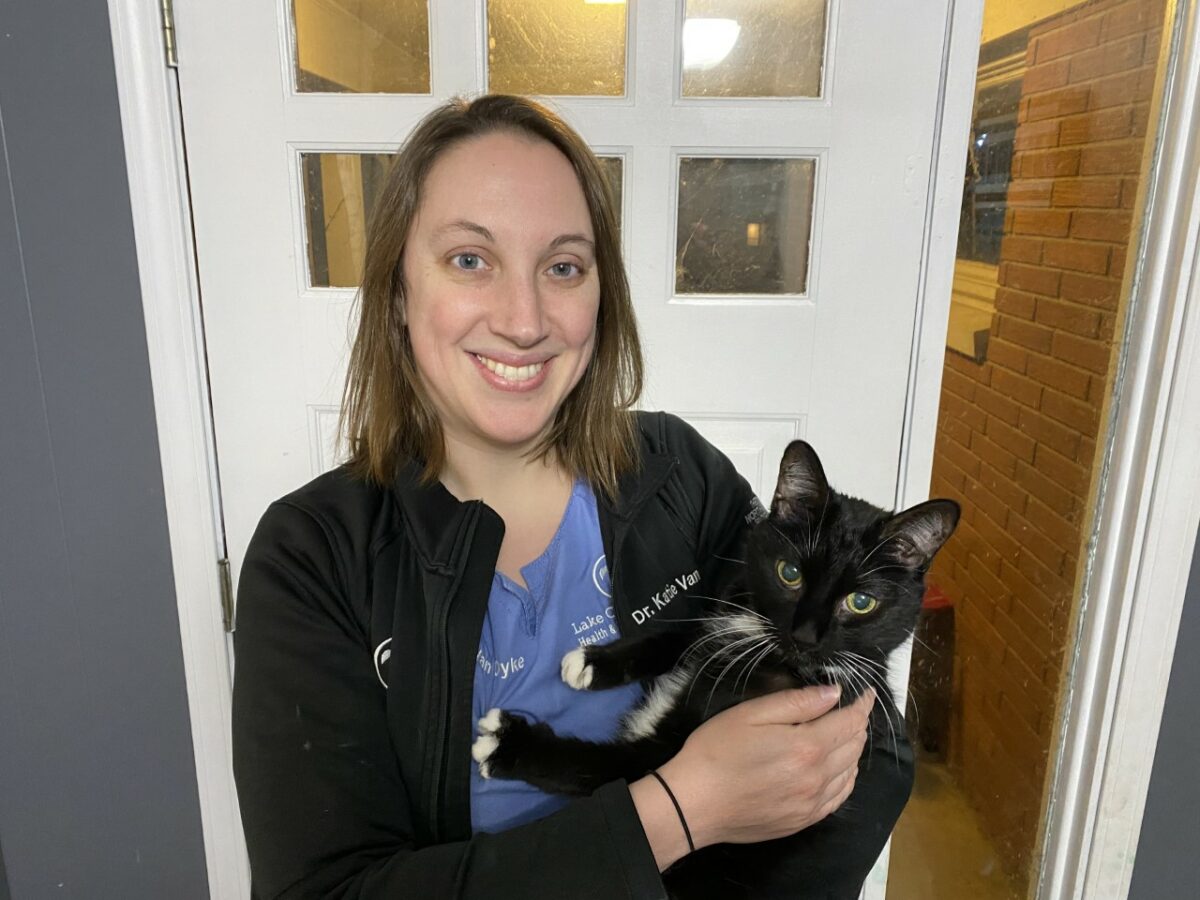Lake City Animal Health & Wellness Center in Warsaw, Indiana, opened their new clinic in 2018 after transitioning from a small building to a large practice where they could separate the dogs from the cats because they were looking into become certified as a cat-friendly practice. However, when they began looking, they discovered the Fear Free Practice certification and determined that the philosophy of managing fear, anxiety, and stress throughout the practice for all patients and boarders would benefit both pets and employees.
“The certification process was very involved. Each of our employees went through online courses that took about 10 to 15 hours. These courses had quizzes that had to be completed to show a certain level of proficiency,” says Katie Van Dyke, DVM. “We had to submit a lot of documentation that demonstrated how our facility met certain requirements, evidence that our medical records documented each patient’s pain, level of anxiety, and accommodations that were made to alleviate anxiety and stress, and a lengthy checklist of various requirements that had to be met to be considered a Fear Free certified practice.
“Certified practices are also evaluated by a Fear Free staff member during regular office hours. This typically occurs as an in-person visit so that the practice can be evaluated while typical operations such as surgery, exams, boarding, etc. are taking place,” Dr. Van Dyke says.
When Eliza Vocke, the customer representative at the practice, became Fear Free certified, she learned the signs to look for when a patient is experiencing FAS. “I learned that certain actions might make a pet more fearful and we don’t even think about what we are doing. The animals that come in to our clinic do seem more happy and relaxed,” Vocke says. “Between using alerts on accounts or the use of pre-visit medication, I have seen a huge difference.”
As a veterinarian, Van Dyke says Fear Free certification has helped her see how closely fear and anxiety are tied to pain in animals. As part of a physical exam, each patient receives a numerical score for the stress levels they are exhibiting and a pain score.
“Having a concrete number tied to pain and stress levels has helped me fine-tune my approach to anxious or painful pets. I am more attuned to stressful body language than I was when I first started practicing 10 years ago and, consequently, I am much quicker to adjust how I am approaching a pet,” says Van Dyke. “I am having many more conversations about how to make each pet’s visit more comfortable, whether that is finding a favorite treat, examining a pet in a favorite location, such as outside, or using medication to help decrease anxiety.”
Jill Anderson, RVT, has been certified as a Fear Free veterinary technician since 2019 but Lake City has been the first Fear Free certified practice in which she has worked. “Since working in a Fear Free practice, I have seen the benefits of using medication, calm voices, and separate waiting rooms to lower the stress levels of patients when they first enter the practice,” Anderson says. “Animals who were once terrified of the vet now enjoy greeting us and the treats they receive while they are here.
“We have multiple owners who travel over an hour to come to our clinic because they know that at Lake City their animals’ comfort and stress level is our first priority. I have seen the joy on an owner’s face when their 10-week-old puppy receives vaccines and doesn’t even notice,” says Anderson, “because they are focused on the peanut butter treat that was placed in front of them.”
And veterinary medicine has evolved even in the past few years. “When I first started practicing medicine 10 years ago, it was common for heavy restraint or even force to be used to hold an animal still. Not only does this often worsen a pet’s fear when coming to the vet, this often would be unsafe for the pet and staff using the restraint,” Van Dyke says. “There have been several times when a patient has come in for an exam with a tucked tail, hackles raised, and a low growl of introduction.”
Now, rather than force the pet with restraint, Van Dyke often prescribes medication to help decrease anxiety. Many of these patients return much more comfortable. She can then often win them over with favorite treats while doing exams. This helps to set patients up for success for future visits as they have memories of prior favorable experiences.
“We have a lot of patients that absolutely love coming to see us, even though we must do scary, invasive things such as exams, injections, or other treatments,” says Van Dyke. “It is amazing how many dogs come bounding into the door to receive their favorite treat or belly rubs. Even many of our feline patients will offer a satisfying slow blink or head rub to express their level of comfort.” That satisfaction of happy pets entering and leaving clinics is what becoming Fear Free is all about.
This article was reviewed/edited by board-certified veterinary behaviorist Dr. Kenneth Martin and/or veterinary technician specialist in behavior Debbie Martin, LVT.
Sandra Toney has been writing about cats for over 25 years and is an award-winning member of Cat Writers Association and Dog Writers Association of America. She has written for many print and online magazines about cat health and behavior as well as authoring eight books. She lives in northern Indiana with her cat, Angel.
Want to stay in the loop on the latest and greatest in keeping your pet happy and healthy? Sign up for our free newsletter by clicking here!








